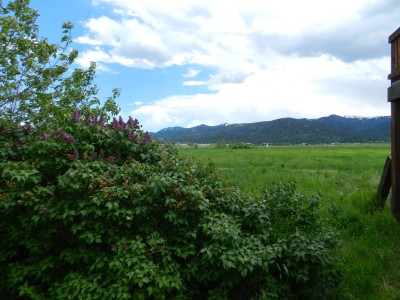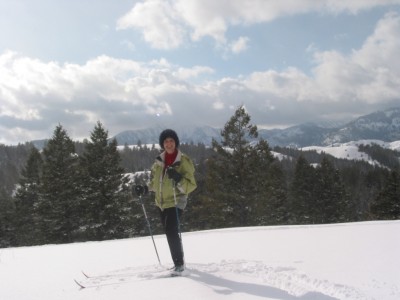About
Bed and Breakfast Inn – Teton Valley
Ted & I started “Kasper’s Kountryside Inn” in 2002. We are both natives of Idaho. I was born on a ranch in Teton Valley and I am a 4th Generation Teton Valley resident. Ted was raised in North Idaho. We love the country we live in. Ted hunts and fishes. I ski and we both Snowshoe and Snowmobile. We Hike and occasionally Backpack in the summer and we do a lot of berry picking! (Huckleberries!!)
Check Availability/Make Reservations
We love music and the cultural arts and are actively involved in those things in our community.
We love having a Bed and Breakfast Inn where people like to come. We also love people telling us we live in one of the most beautiful places on earth. We love the spirit of the valley and the history that goes with it. We hope you will come and enjoy it with us. We look forward to making your vacation the best vacation yet!!!!
History
Teton Valley was initially populated by The Shoshone–Bannock and Northern Paiute Indian tribes before Lewis and Clark made their epic trek across the area in 1805.
 Teton Valley has been the site of the annual Rocky Mountain Fur Rendezvous, in 1829 and 1832.[3] At the Rendezvous, trappers from the Rockies would go to sell their furs and traders would come in to provide supplies. Indian tribes such as the Flathead and Nez Perce would also attend the rendezvous. In the summer of 1832, a battle was fought between the trappers, Flatheads and Nez Perce with the Blackfeet Indian Tribe near Victor, Idaho.
Teton Valley has been the site of the annual Rocky Mountain Fur Rendezvous, in 1829 and 1832.[3] At the Rendezvous, trappers from the Rockies would go to sell their furs and traders would come in to provide supplies. Indian tribes such as the Flathead and Nez Perce would also attend the rendezvous. In the summer of 1832, a battle was fought between the trappers, Flatheads and Nez Perce with the Blackfeet Indian Tribe near Victor, Idaho.
In 1834, Pierre-Jean De Smet held the first religious service in the West in Teton Valley.[4] Teton Valley is formally known as Pierre’s Hole, named by the trappers who gathered there each summer, after Pierre-Jean De Smet.
From 1841 to 1868, over 300,000 whites migrated over the South Pass, about 150 miles south of Teton Valley. The migrations were due to the California Gold Rush of 1849 and the migration of the Mormons to avoid religions persecution. The migrating groups took over lands that belonged to The Bannock, Nez Perce and Blackfeet. The Nez Perce tribe retreated towards Canada only to be captured short of the border.
The completion of the transcontinental railroad and the Homestead Act of 1862 brought many settlers into Teton Valley. Some of the present day inhabitants of Teton Valley are fifth generation descendants of the early settlers.
taken from WIKIPEDIA





